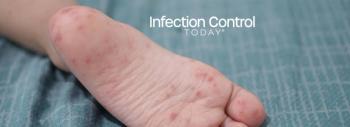
Understanding Bioburden: Critical Steps in Ensuring Medical Device Safety
Bioburden testing measures microbial life on medical devices before sterilization, crucial for patient safety and compliance with international standards. Learn why it is vital in the health care setting.
What Is Bioburden and Why Is It Critical to Assess It?
In medical manufacturing, bioburden is about more than cleanliness. It is about understanding and managing the unseen microbes attached to medical devices and pharmaceuticals before being sterilized. The effects are significant, influencing how sterilization is carried out and impacting patient health.
Below, we will explore bioburden, how it is tested, and
Understanding Bioburden
What Bioburden Testing Is Used for
Primarily, bioburden testing serves to:
- Establish sterilization parameters: Knowing the level and type of bioburden helps choose the most effective technique. Different levels of contamination may require different sterilization intensities or durations.
- Validate sterilization processes: Regular tests are used to verify that the sterilization processes in place effectively reduce microbial presence to acceptable levels.
- Monitor production and packaging: Testing is also used as a diagnostic tool to identify potential lapses in manufacturing and packaging processes that could increase the risk of contamination.
The Importance of Bioburden Testing
Bioburden testing is more than a procedural step; it is a fundamental part of the quality control process determining the microbial load on medical devices and products. This testing is pivotal for defining the sterilization needs since the effectiveness of sterilization methods—such as autoclaving, radiation, or chemical disinfectants—depends heavily on the initial quantity and types of microbial contamination present. The goal is to reduce the bioburden to a safe level that the intended sterilization process can effectively manage.
Bioburden testing is also essential for compliance with international safety standards. Regulatory agencies, such as the FDA in the US or the European Medicines Agency in Europe, require detailed bioburden analysis before a medical device goes to market to ensure it meets stringent safety criteria and protects patient health.
The Steps in Bioburden Testing
The
- Sampling: Technicians take samples from devices or materials using swabs or other methods designed to capture microbes without adding contaminants.
- Culturing: These samples are cultured in a lab setting where conditions are optimized for microbial growth, making identifying and counting the bioburden easier.
- Counting: Specialists count the colonies of microorganisms that develop to quantify the bioburden. This count helps determine the cleanliness level of the sample.
- Analysis: Results are analyzed to understand the implications for sterilization processes and product safety.
Engaging
Leveraging Bioburden Testing for Enhanced Patient Safety
Bioburden testing is vital to manufacturing and maintaining medical devices. It helps ensure that products are safe, comply with global standards, and are effective in their intended medical applications. This rigorous assessment helps fine-tune sterilization practices, ultimately safeguarding patient health and enhancing the efficacy of medical treatments across the industry.
Newsletter
Stay prepared and protected with Infection Control Today's newsletter, delivering essential updates, best practices, and expert insights for infection preventionists.






